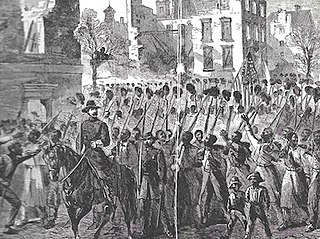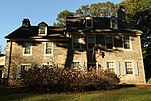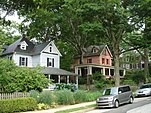
The 54th Massachusetts Infantry Regiment was an infantry regiment that saw extensive service in the Union Army during the American Civil War. The unit was the second African-American regiment, following the 1st Kansas Colored Volunteer Infantry Regiment, organized in the Northern states during the Civil War. Authorized by the Emancipation Proclamation, the regiment consisted of African-American enlisted men commanded by white officers. The 54th Massachusetts was a major force in the pioneering of African American civil war regiments, with 150 all black regiments being raised after the raising of the 54th Massachusetts.

United States Colored Troops (USCT) were Union Army regiments during the American Civil War that primarily comprised African Americans, with soldiers from other ethnic groups also serving in USCT units. Established in response to a demand for more units from Union Army commanders, USCT regiments, which numbered 175 in total by the end of the war in 1865, constituted about one-tenth of the manpower of the army, according to historian Kelly Mezurek, author of For Their Own Cause: The 27th United States Colored Troops. “They served in infantry, artillery, and cavalry.” Approximately 20 percent of USCT soldiers were killed in action or died of disease and other causes, a rate about 35 percent higher than that of white Union troops. Numerous USCT soldiers fought with distinction, with 16 receiving the Medal of Honor. The USCT regiments were precursors to the Buffalo Soldier units which fought in the American Indian Wars.

The Bureau of Colored Troops was created by the United States War Department on May 22, 1863, under General Order No. 143, during the Civil War, to handle "all matters relating to the organization of colored troops." Major Charles W. Foster was chief of the Bureau, which reported to Adjutant General Lorenzo Thomas. The designation United States Colored Troops replaced the varied state titles that had been given to the African-American soldiers.

The 1st South Carolina Volunteer Infantry Regiment (Colored) was a Union Army regiment during the American Civil War, formed by General Rufus Saxton. It was composed of escaped slaves from South Carolina and Florida. The 1st SC Volunteer Infantry black regiment was formed in 1862 and became the 33rd United States Colored Troops Regiment in February of 1864. It has the distinction of being the first black regiment to fight in the Civil War at the Skirmish at Spaulding's on the Sapelo River GA. It was one of the first black regiments in the Union Army.

During the American Civil War, the Commonwealth of Pennsylvania played a critical role in the Union, providing a substantial supply of military personnel, equipment, and leadership to the Federal government. The state raised over 360,000 soldiers for the Federal armies. It served as a significant source of artillery guns, small arms, ammunition, armor for the new revolutionary style of ironclad types of gunboats for the rapidly expanding United States Navy, and food supplies. The Phoenixville Iron Company by itself produced well over 1,000 cannons, and the Frankford Arsenal was a major supply depot.

The 28th United States Colored Infantry, also called the 28th Indiana Infantry (Colored),1 was an African American infantry regiment from the state of Indiana that fought in the American Civil War.

Powhatan Beaty was an African American soldier and actor. During the American Civil War, he served in the Union Army's 5th United States Colored Infantry Regiment throughout the Richmond–Petersburg Campaign. He received America's highest military decoration, the Medal of Honor, for taking command of his company at the Battle of Chaffin's Farm, after all officers had been killed or wounded.

African Americans, including former slaves, served in the American Civil War. The 186,097 black men who joined the Union Army included 7,122 officers and 178,975 enlisted soldiers. Approximately 20,000 black sailors served in the Union Navy and formed a large percentage of many ships' crews. Later in the war, many regiments were recruited and organized as the United States Colored Troops, which reinforced the Northern forces substantially during the conflict's last two years. Both Northern Free Negro and Southern runaway slaves joined the fight. Throughout the course of the war, black soldiers served in forty major battles and hundreds of more minor skirmishes; sixteen African Americans received the Medal of Honor.
The 1st Kansas Colored Infantry Regiment was an infantry regiment that served in the Union Army during the American Civil War. It was the first black regiment to be organized in a northern state to see combat during the Civil War. At the Battle of Poison Spring, the regiment lost nearly half its number, and suffered the highest losses of any Kansas regiment during the war.
The 9th Louisiana Infantry (African Descent), later reorganized as 1st Mississippi Colored Heavy Artillery and then renamed 5th U.S. Colored Heavy Artillery, was an African-American regiment in the Union Army during the American Civil War. It famously fought in the Battle of Milliken's Bend; one of the earliest Civil War battles with African-American troops involved.

Camp Nelson National Monument, formerly the Camp Nelson Civil War Heritage Park, is a 525-acre (2.12 km2) national monument, historical museum and park located in southern Jessamine County, Kentucky, United States, 20 miles (32 km) south of Lexington, Kentucky. The American Civil War era camp was established in 1863 as a depot for the Union Army during the Civil War. It became a recruiting ground for new soldiers from Eastern Tennessee and enslaved people, many of whom had fled their living conditions to be soldiers.

David Bustill Bowser was a 19th-century African-American ornamental artist and portraitist. As the designer of battle flags for eleven African-American regiments during the American Civil War and painter of portraits of prominent Americans, including U.S. President Abraham Lincoln and abolitionist John Brown, Bowser was an artist whose "works were the first widely viewed, positive images of African Americans painted by an African American," according to historians at the Pennsylvania Historical and Museum Commission. Politically active throughout much of his adult life, he also helped to secure the post-war passage of key civil rights legislation in Pennsylvania.
The 41st United States Colored Infantry was an infantry regiment that served in the Union Army during the American Civil War. The regiment was composed almost entirely of African American enlisted men and commanded by white officers. The regiment was authorized by the Bureau of Colored Troops which was created by the United States War Department on May 22, 1863. The regiment engaged in the Siege of Petersburg and Appomattox Campaign and was present at the unconditional surrender of Confederate General Robert E. Lee and the Army of Northern Virginia at Appomattox Court House on April 9, 1865.
The 31st United States Colored Infantry was an infantry regiment raised in New York State during the American Civil War that recruited black soldiers.

The 55th Massachusetts Infantry Regiment was the sister regiment of the renowned Massachusetts 54th Volunteers during the latter half of the American Civil War. The enactment of the Emancipation Proclamation by United States President Abraham Lincoln on January 1, 1863 opened the way for the enlistment of free men of color and newly liberated slaves to fight for their freedom within the Union Army. As the ranks of the 54th Massachusetts quickly reached its full complement of recruits, an overflow of colored volunteers continued to pour in from several other states outside Massachusetts — many of whom simply had not arrived in time — prompting Governor John Albion Andrew to authorize yet another regiment of colored soldiers sponsored by the Commonwealth. Lieutenant Colonel Norwood P. Hallowell of the 54th Massachusetts was promoted to colonel and appointed commander of the 55th Massachusetts on May 30, 1863. Five companies of the 55th Massachusetts were mustered into service on May 31; two more companies were mustered in on June 15; and the last three on June 22.

William Gould (W.G.) Raymond (1819–1893), a pastor, chaplain and American soldier in the Union Army during the American Civil War, played a prominent role in the initial recruitment of the first federal African American regiments of the Union Army. In the period between the Emancipation Proclamation and the establishment of the Bureau of Colored Troops in 1863, Raymond, along with J.D. Turner, received authorization from President Abraham Lincoln to recruit and command the first federal African-American Union Army troops from the District of Columbia. Prior to this, African-American troops were raised at the state level only, without the direct authorization of Lincoln. The troops recruited by Raymond and Turner would become the 1st United States Colored Infantry Regiment and the first regiment of the United States Colored Troops (U.S.C.T), enduring threats and significant obstacles, but ultimately serving with distinction.

The 45th United States Colored Infantry was an infantry regiment of the Union Army during the American Civil War.
The 24th United States Colored Infantry Regiment was an infantry regiment that served in the Union Army during the American Civil War. The regiment was composed of African American enlisted men commanded by white officers and was authorized by the Bureau of Colored Troops which was created by the United States War Department on May 22, 1863.

The 127th United States Colored Infantry was an American infantry regiment which fought with the Union Army during the American Civil War. Staffed by African American enlisted men who were placed under the command of white officers, the regiment was formed and trained at Camp William Penn near Philadelphia, Pennsylvania between August 23 and September 10, 1864.

Camp Greene was the site of a training camp for the 1st United States Colored Infantry Regiment and other Colored Troops on Mason's Island, now known as Theodore Roosevelt Island, in Washington, D.C. The island was also a refugee camp for freedom seekers. It is situated in the Potomac River. It has been made an Underground Railroad site on the National Park Service's Network to Freedom.





















